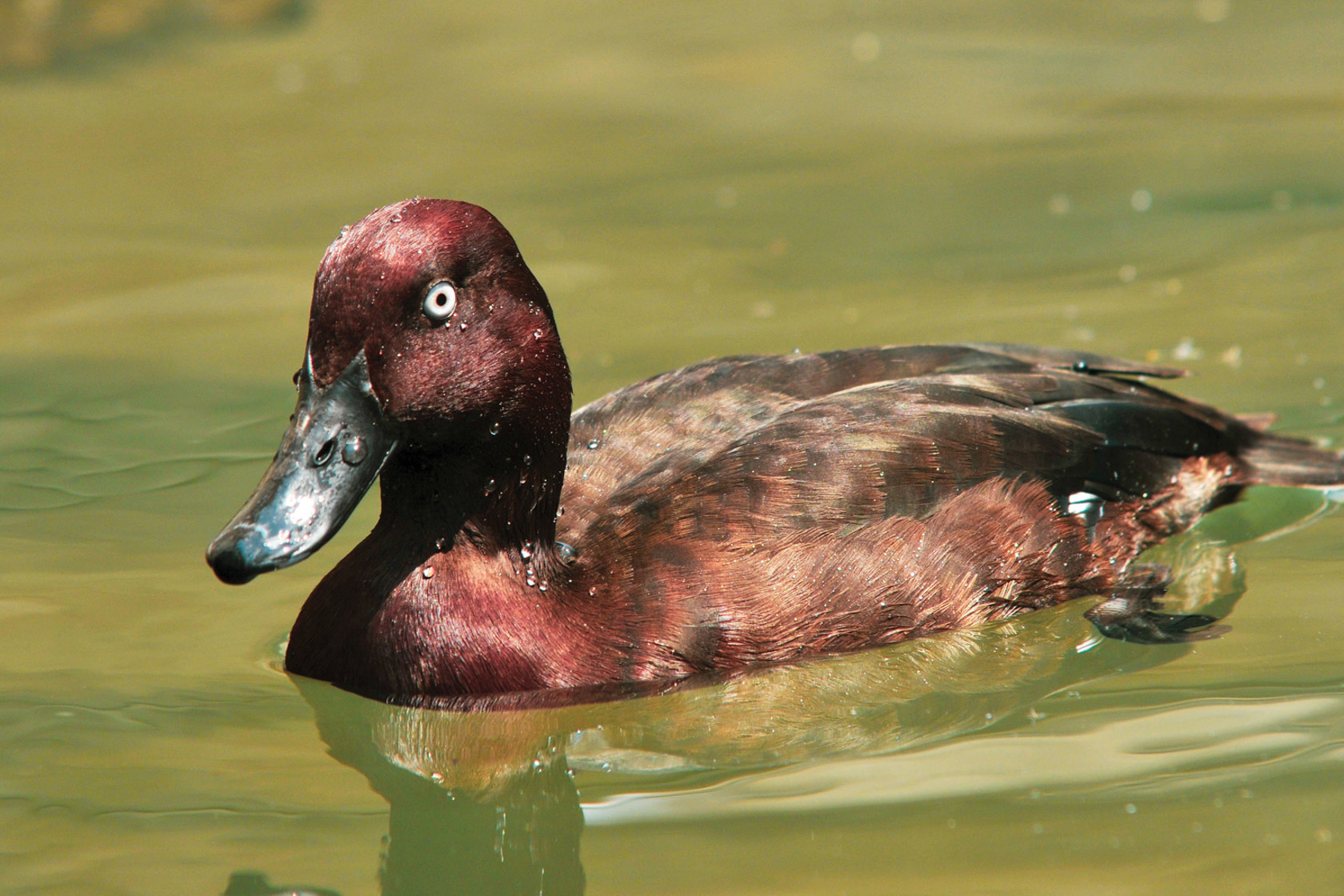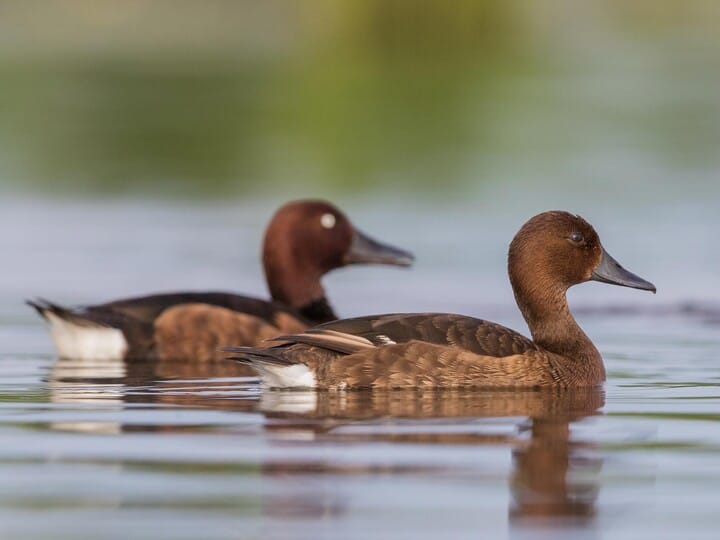How to Identify Madagascar Pochards Male Or Female: Expert Tips
Distinguishing between male and female Madagascar Pochards can be challenging. These rare ducks have subtle differences that require a keen eye.
Madagascar Pochards are critically endangered. Their population is limited, making identification important for conservation efforts. Males and females look quite similar, but there are key traits that set them apart. Understanding these differences helps in research and protection. In this guide, we will explore clear ways to tell them apart.
This knowledge not only aids scientists but also birdwatchers and enthusiasts. Let’s dive into the distinct features of these rare birds. By the end, you’ll be better equipped to identify Madagascar Pochards by gender.
Physical Differences
Identifying Madagascar Pochards as male or female is an exciting task. Observing the physical differences can help. These differences include size, shape, and plumage coloration. Let’s explore these aspects in detail.
Size And Shape
Male and female Madagascar Pochards differ in size and shape. Typically, males are larger and more robust. Females, on the other hand, have a slightly smaller and sleeker build. The table below highlights the differences:
| Characteristic | Male | Female |
|---|---|---|
| Body Length | 48-52 cm | 45-49 cm |
| Weight | 800-900 grams | 700-800 grams |
Plumage Coloration
The plumage coloration is another key identifier. Male Madagascar Pochards exhibit brighter and more vibrant colors. Females display more muted and earthy tones. Below are the distinct features:
- Male: Bright chestnut brown head, white underparts, and darker back feathers.
- Female: More subtle brown head, light brown underparts, and slightly lighter back feathers.
These visual clues make it easier to distinguish between the two sexes. Observing closely can lead to accurate identification.

Credit: www.durrell.org
Behavioral Traits
Behavioral traits can help you identify whether a Madagascar Pochard is male or female. Observing their behavior provides clues that are often more reliable than physical characteristics alone. Pay attention to their actions, especially during courtship and feeding. These behaviors can reveal the gender of these rare birds.
Courtship Displays
During courtship, males often display more active and vibrant behaviors. They may perform elaborate dances and vocalizations. These displays are meant to attract females. Males might also engage in wing-flapping and head-bobbing. Females, in contrast, usually show more subdued behavior. They observe the male’s displays quietly. This passive behavior helps distinguish them from males.
Feeding Habits
Feeding habits can also indicate the gender of Madagascar Pochards. Males and females might have different preferences and techniques. Males often forage more aggressively. They may dive deeper and stay submerged longer. Females tend to be more cautious and selective. They often stay closer to the surface. By watching their feeding behavior, you can gather clues about their gender.
Vocalizations
Identifying Madagascar Pochards by their vocalizations can be fascinating. These ducks have distinct sounds that help tell males and females apart. Listening carefully can reveal differences in their calls and communication patterns.
Calls And Sounds
Male Madagascar Pochards have deeper, more resonant calls. Their sounds include a series of short, repeated quacks. These quacks are often low-pitched and rhythmic. Males may also produce a soft, whistling noise during courtship.
Female Madagascar Pochards, on the other hand, have higher-pitched calls. Their sounds are often sharper and more abrupt. Females usually communicate with quick, high-pitched quacks. These calls can sound more urgent compared to the males.
Communication Patterns
Male Madagascar Pochards use their calls to establish territory. They often call repeatedly to mark their presence. During mating season, males increase their vocal activity. Their calls become more frequent and intense.
Females use their vocalizations to communicate with their ducklings. They often call to guide and gather their young. Female calls also signal distress or alert others to danger. Their communication is vital for the safety of the brood.
Understanding these vocal patterns helps in identifying male and female Madagascar Pochards. Paying attention to their sounds can provide valuable clues.

Credit: www.theguardian.com
Habitat Preferences
Madagascar Pochards have specific habitat preferences. These preferences help identify their natural environments. Observing these locations can assist in distinguishing between males and females.
Breeding Grounds
Breeding grounds are vital for the Madagascar Pochard’s life cycle. They prefer shallow freshwater lakes. These lakes often have abundant vegetation. Males are usually more visible in these areas. Their bright colors stand out during breeding season. Females, on the other hand, stay more hidden. They blend with the surroundings for protection.
Nesting Sites
Nesting sites are crucial for observing Madagascar Pochards. Females usually select dense vegetation near water. They seek safe spots to lay eggs. Males stay nearby to guard the territory. The female’s camouflaged plumage helps her stay unnoticed. This behavior is key to their survival.
Understanding habitat preferences aids in identifying Madagascar Pochards. Observing their breeding grounds and nesting sites offers valuable insights. Each gender has unique roles and behaviors in these habitats. This knowledge helps in recognizing their differences.

Credit: www.allaboutbirds.org
Frequently Asked Questions
What Are Madagascar Pochards?
Madagascar Pochards are critically endangered diving ducks native to Madagascar. They have distinct physical features and behaviors.
How To Distinguish Male Madagascar Pochards?
Male Madagascar Pochards have bright chestnut plumage and a darker head. Their eyes are red.
How Do Female Madagascar Pochards Look?
Female Madagascar Pochards have duller plumage than males. They are generally brownish and have a paler head.
Are There Size Differences Between Genders?
Yes, males are slightly larger than females. They have a more robust build.
Conclusion
Identifying Madagascar Pochards by gender is not difficult. Observe their color and size. Males are typically brighter and slightly larger. Females, on the other hand, have duller feathers. Paying attention to these traits helps bird enthusiasts. With practice, anyone can spot the differences.
Enjoy birdwatching and appreciate these unique ducks. Your newfound skills will enhance your experience. Happy birding!
Hello Dear, I'm Poli Kolymnia, owner of many birds (including budgies).
With a deep passion for these feathered companions, I'm here to share my expertise and extensive knowledge on birds care.
My articles cover essential topics like diet, housing, care, and health, providing practical tips to help you create a happy and thriving environment for your birds.

